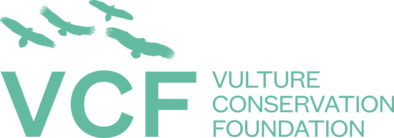Griffon Vulture Sardinia
Releasing Griffon Vultures in Sardinia to boost the local population
- Homepage
- Pages
- Our Work
- Reintroduction And Restocking
- Griffon Vulture to Sardinia
The Griffon Vulture was distributed all over Sardinia up to the late 1940s with an estimated population of 800 to 1200 individuals. After the Second World War, the population of the species on the island dropped rapidly until the outlawing of poisoned baits in 1977. This decline restricted the species distribution range to the north-western part of the island, and during a 2013 survey, only 30 territorial pairs and 130 individuals were remaining. The Griffon Vulture population in Sardinia represents the last autochthonous breeding population of vultures in Italy and the island is home to two of the most important breeding sites for Griffon Vultures in Italy and the wider Mediterranean. To secure and boost the important Griffon Vulture population in Saridnia, the LIFE Under Griffon Wings project began in 2015.
RESTOCKING THE GRIFFON VULTURE POPULATION
Since 2017, the LIFE Under Griffon Vultures team released over 60 Griffon Vultures into the wild!
The latest census in 2020 estimates the minimum population of the species in Sardinia to be 242 individuals and the maximum at 272. These results show the gradual increase of the species’ population on the island compared to the 2013 survey results, where 130 individuals were counted.

Sassari University leads the LIFE Under Griffon Wings project in partnership with the Municipality of Bosa, the Forestry Agency and the Corpo Forestale di Vigilanza Ambientale to reinforce the population of the species on the island by implementing several conservation actions. These include improving food availability, mitigating the risk of poisoning and reducing the human disturbance in nesting sites. Furthermore, the project enhances the population viability by carrying out an extensive restocking programme to increase the small population by translocating wild-born birds from wildlife rehabilitation centres in Spain to Sardinia, as well as some captive-bred birds from European zoos. The project team released a total of 63 Griffon Vultures in Sardinia so far, and investigation indicates that these birds have a high survival rate in the wild. Thanks to these targeted conservation measures, the numbers of Griffon Vultures gradually increase on the island. The census in 2019 estimates the population of the species between 230 to 250 individuals, over 100 birds more in six years time.
GRIFFON VULTURE CONSERVATION EFFORTS FAVOUR ENDANGERED SPECIES
The Griffon Vulture conservation efforts in Sardinia have favoured the whole community of scavenging birds, including Egyptian Vultures, a globally endangered species. In 2019, two Egyptian Vultures settled to Porto Conte in Sardinia, which was excellent news given that there are no Egyptian Vultures breeding in Sardinia and there are only 10 to 13 pairs of these species known around Italy. It seems that the improvement of food availability and the decrease of human disturbance attracted the birds to the island, and a couple of months later, an Egyptian Vulture chick also hatched!

The Vulture Conservation Foundation (VCF) supports this important conservation project to facilitate rapid demographic recovery of the small and threatened Sardinian Griffon Vulture population. The VCFs secures Griffon Vultures from Spain for release to Sardinia in a collaboration with Junta de Extremadura. Most of the vultures are juveniles that were weakened or injured in the wild in Extremadura and entered wildlife recovery centres. After rehabilitation, the VCF arranges the transport of these birds, where they have to travel over 2,000km by land and ferries. So far, the VCF provided a total of 67 Griffon Vultures for release, fulfilling the requirements of the project. Furthermore, the VCF is part of the scientific committee of this project and has been advising on anti-poison actions, and the development of the methodology for the release of vultures.



